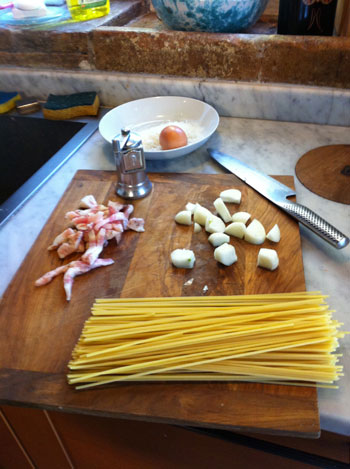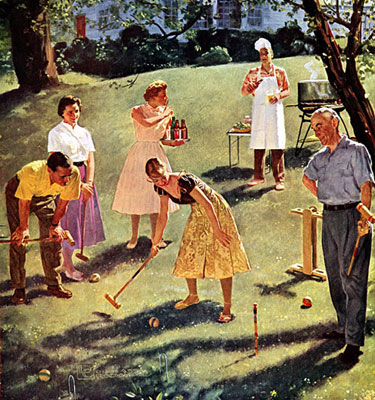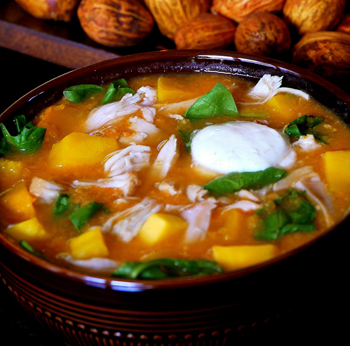 I had a cooking breakthrough this past week that I want to share with you. Because Jill is eating more and more veganly and handling a lot of her own shopping and preparation, I end up cooking a lot of dishes for myself. And I’m finding this has liberated me in a number of ways.
I had a cooking breakthrough this past week that I want to share with you. Because Jill is eating more and more veganly and handling a lot of her own shopping and preparation, I end up cooking a lot of dishes for myself. And I’m finding this has liberated me in a number of ways.
Instead of measuring or checking the recipe for amounts, I just say to myself, “How much of that do I feel like today?” And I throw in just that much.
Without having to worry about this person’s salt problem, that person’s meat problem, this person’s wheat allergy, that person’s fat phobia – my dishes are turning out just the way I like them.
A recent carbonara is a perfect example: Carbonara is an emotional dish – it’s bacon and eggs, on pasta, with cheese, with lots of black pepper.
One theory is that the name “carbonara,” which means, “in the style of the coal-workers” really comes from the fact that the black pepper scattered on top looks like coal dust. I’m going with that theory. I think a lot of pepper makes this dish.
Allora.

 When I was a child I felt sorry for kids whose moms made "meat and potatoes" dinners. That was until I heard of moms who were vegetarians. I thought that was tragic.
When I was a child I felt sorry for kids whose moms made "meat and potatoes" dinners. That was until I heard of moms who were vegetarians. I thought that was tragic. The change in temperature; going from cold to hot to cold again has wreaked havoc on my family and their health. Me included. Last week, there were two mornings that I dropped the kids off at school, came home, and got right back into bed. Slept for hours, with a puppy on my belly. Regardless of feeling totally crappy, there truly is nothing better than getting back under the covers (at 9:00 a.m.) with a cozy, little Lola close by.
The change in temperature; going from cold to hot to cold again has wreaked havoc on my family and their health. Me included. Last week, there were two mornings that I dropped the kids off at school, came home, and got right back into bed. Slept for hours, with a puppy on my belly. Regardless of feeling totally crappy, there truly is nothing better than getting back under the covers (at 9:00 a.m.) with a cozy, little Lola close by. A good steak never needs something extra to make it stand out. However, sometimes I do have a craving for an extra twang to go with my meat.
A good steak never needs something extra to make it stand out. However, sometimes I do have a craving for an extra twang to go with my meat. Okay, I'll try anything once and make the best of it if need be, but winter camping in near zero temperatures? I prepared a favorite dinner of braised rabbit with prunes, an undressed endive salad with the vinaigrette on the side and ramekins of chocolate mousse for our dream overnight camping in the backwoods of Northern Maine. We decided on a trail to cross country ski in on with my three dogs, nothing too challenging as we had lots of gear to transport on a toboggan plus it gets dark very early at this time of year AND it was our first test at "making camp" at rather cold temperatures.
Okay, I'll try anything once and make the best of it if need be, but winter camping in near zero temperatures? I prepared a favorite dinner of braised rabbit with prunes, an undressed endive salad with the vinaigrette on the side and ramekins of chocolate mousse for our dream overnight camping in the backwoods of Northern Maine. We decided on a trail to cross country ski in on with my three dogs, nothing too challenging as we had lots of gear to transport on a toboggan plus it gets dark very early at this time of year AND it was our first test at "making camp" at rather cold temperatures.
